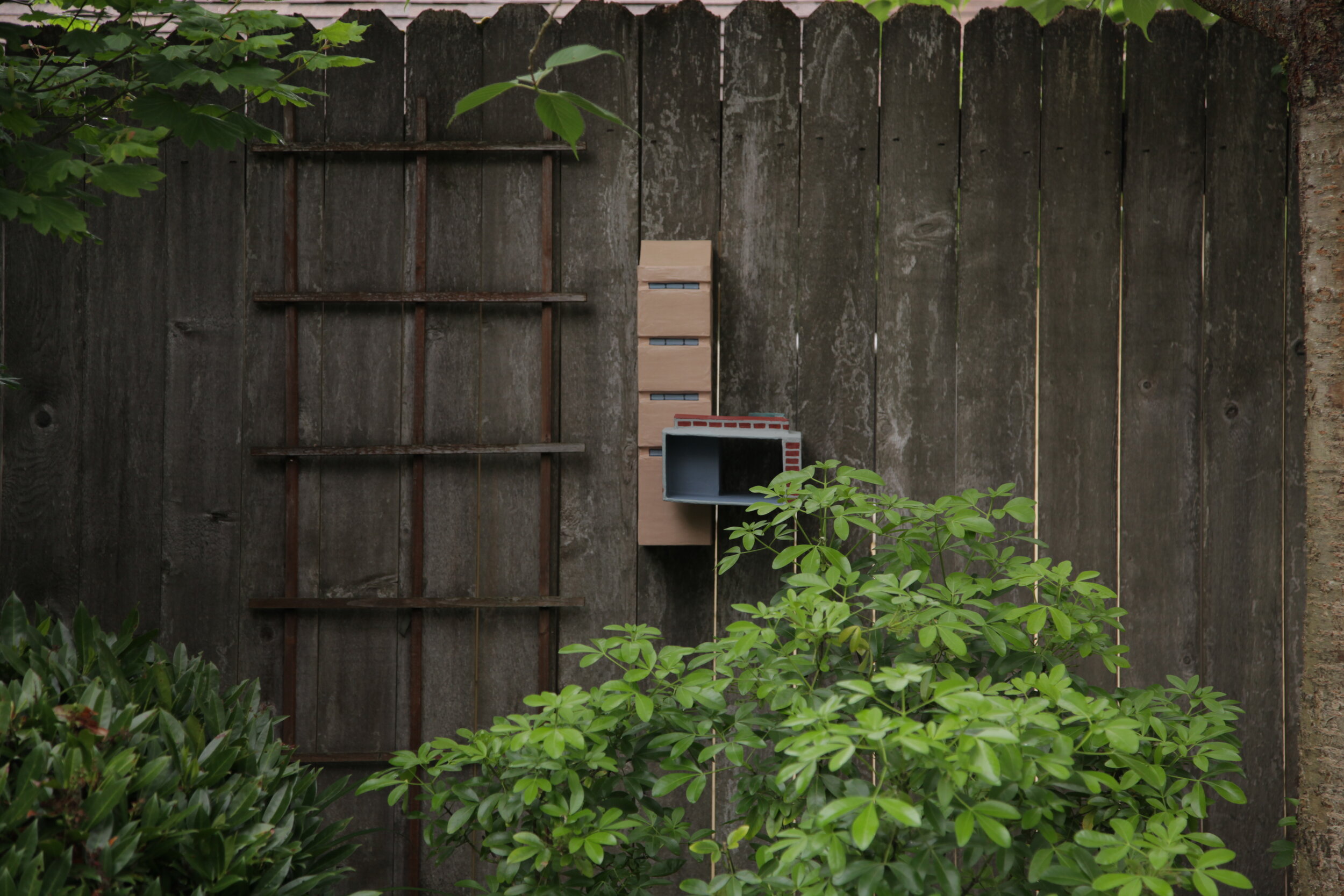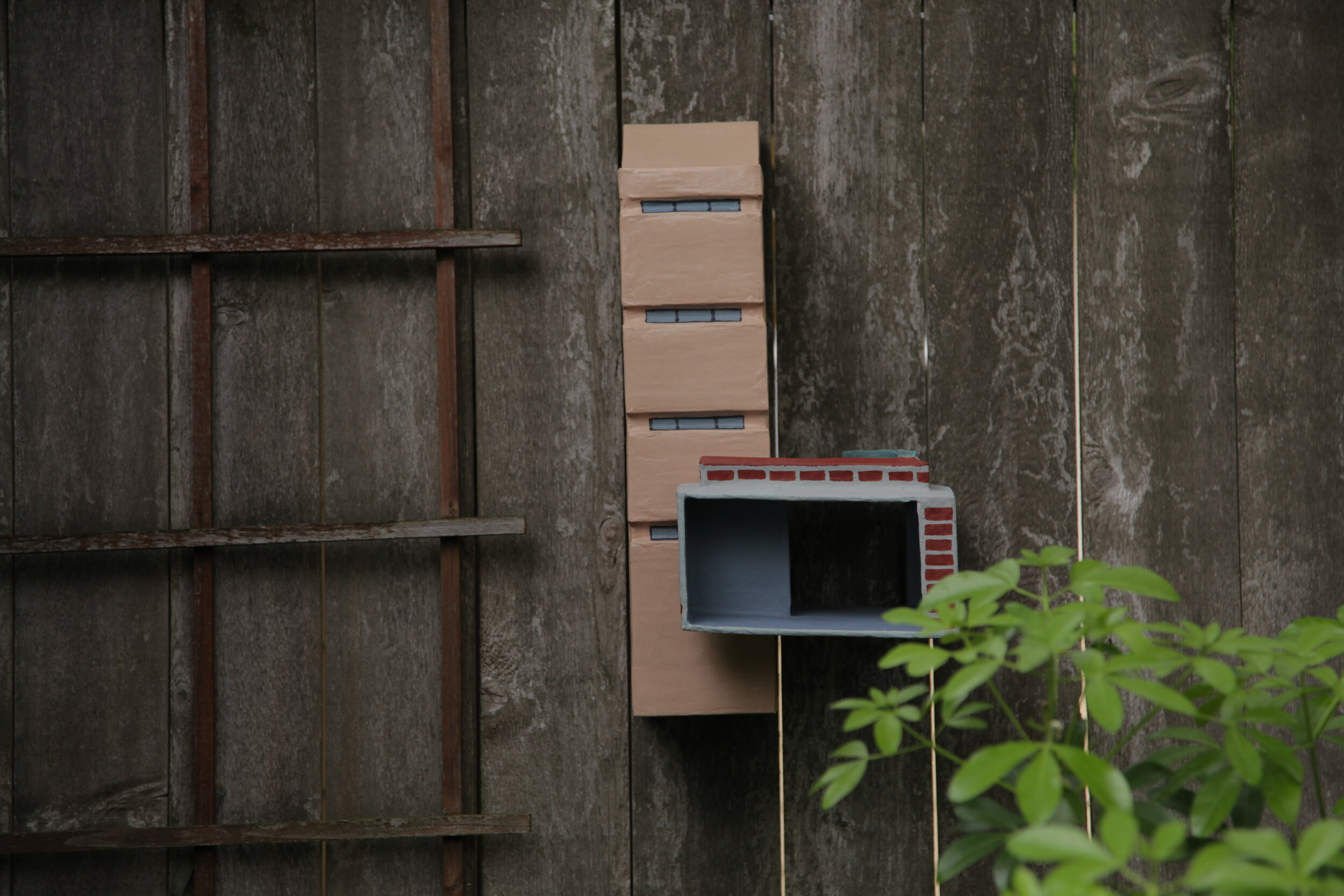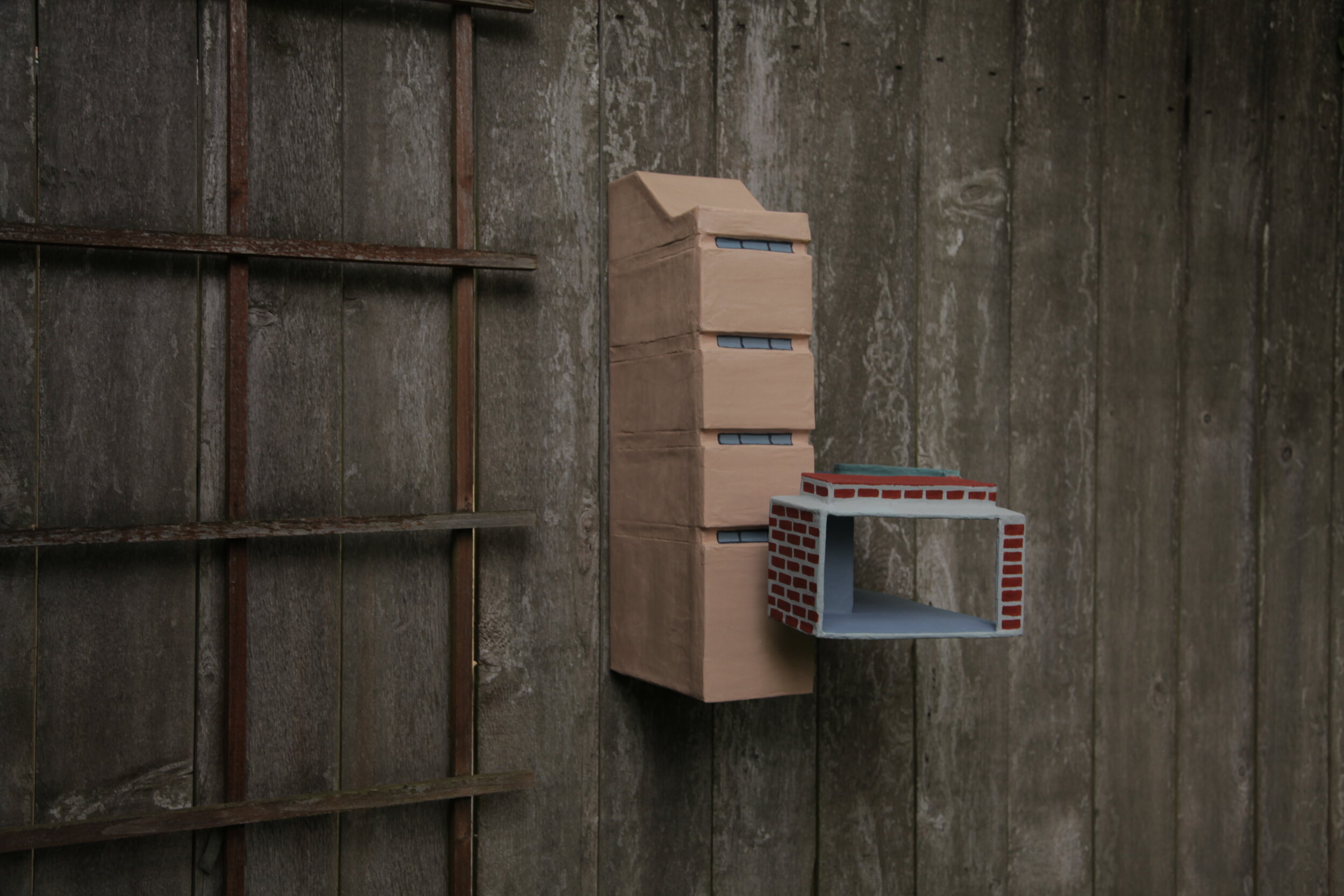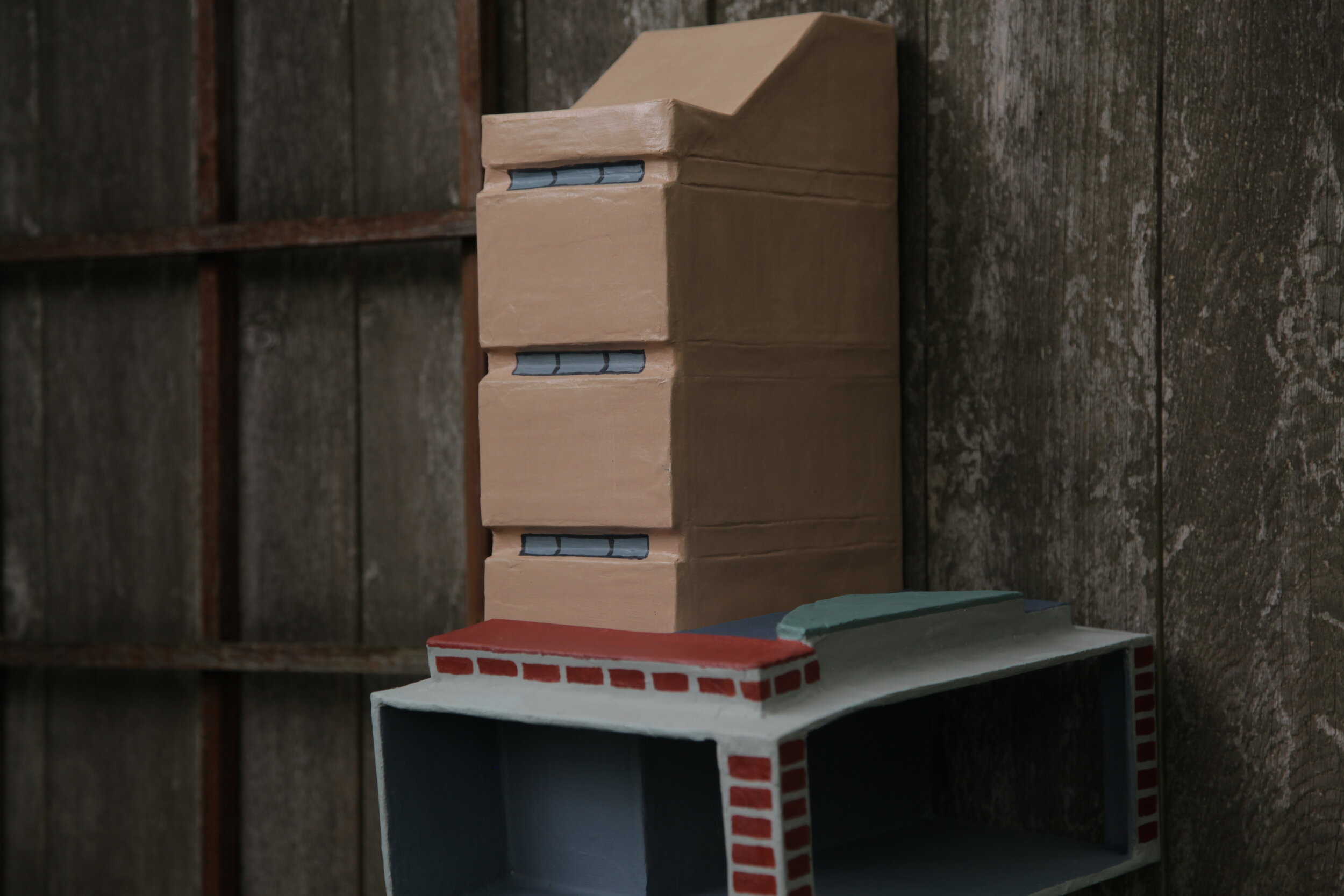Seen But Not Noticed
TENET (Julia Eshaghpour and Kevin Hollidge)
@
Institute for New Connotative Action
What does it mean to be seen but not noticed?
Many buildings are defined by an apparent absence of intentional style, where the unremarkable is its defining feature. The schools, public buildings, office buildings, spaces that imagine a public often take a utilitarian form, absent of stylistic adventure or any kind of ornament. These kinds of impersonal spaces often privilege economic feasibility and non-utopic utilitarian sense of design.
I’ve been enjoying the rooftop of my apartment. Sitting up there savoring the view, it took months for me to recognize that there is a brutalist building on the block next to mine. The shape is akin to a ledge, common in the city. Surely I’ve seen this building as I’ve walked past it hundreds of times before, but why hadn’t I noticed it until now?
Why did they build such an ordinary structure? They attempted to materialize some egalitarian ideals, but what else? Brutalism’s iconic early iterations coupled egalitarianism with monumentality, ideology with material. However, the brutalist building in my neighborhood appears less noticeable, less bold, wedged between opposing eras and styles.
The classic tenement buildings that surround it are littered with motifs and ornaments of European Classicism, defining historic East Coast urban poverty. These former tenement buildings have evolved past their cramped origins: they’ve been renovated and gutted in waves of new money. These tenements were controversial in their time, built using new machines to produce iconography which up until then were built only by skilled craftsmen for the wealthy. The exteriors of New York’s tenements were offensive, distastefully pastiche, but built by (hustling immigrants?) aspiring to riches (the new american dream?) and the symbols of success.
How are these architectures different from that which defines the new millennium? The glass towers of the 21st century neo-international style pops up in New York, London, and Hong Kong. Avoiding the appearance that people live in them, they instead suggest quiet wealth exchange, and are identified by one word — luxury. Contractor modernism? The neointernational style rejects utopic modernity and overly-embellished classicism, favoring the blank elegance of liquidity and monetary policy. These buildings, which are quickly becoming a permanent feature of the contemporary cityscape, almost universally emulate that ‘nonspace’ feeling, where its absence of formal care is the most defining feature of the space. Buildings such as the 41 Cooper Square “Cooper Union” building claim an iconic status, while being interchangeable with one another, and appear as rings in a chain of similar buildings around the world.
But getting back to that Brutalist building on my block, the equality implied by its form has receded into the dreams of another century. These dreams built up our cities, but now they are unnoticed, shadows filling in gaps between the blocks.
Tenet, Seen but not Noticed, 2020. Papier-mâché, cardboard, paint.





